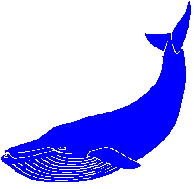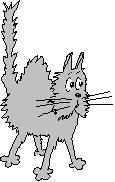|
[Front Page] [Features] [Departments] [SGAP Home Page] [Subscribe]

Net Watch...choice selections on the 'net

"Net Watch" aims to report those sites that you, as a grower, propagator or appreciator of Australian plants, might find interesting. Most of them relate to Australian issues of a horticultural, botanical or conservation nature but a few are of more general interest. A couple of other sites are "thrown in" for no other reason than that they redefine the term "bizarre". If you know of a site that fits into these general categories, please let us know.

The Living World
  Sir Joseph Banks Papers Sir Joseph Banks Papers
If you're interested in the early European history of Australia, as well as the history of botanical collection then this site is a gold mine!
Maintained by the State Library of New South Wales, the collection includes a wealth of information on Banks and his work. A small sampling from the Table of Contents.....
- The Endeavour journal of Joseph Banks, August 1768 - July 1771
- 'Voluntiers, Instructions, Provision for 2d. Voyage', being papers concerning Banks' preparations for the second Pacific voyage of HM Ships Resolution and Adventure, James Cook, 1768, 1771-1773
- Letters received by Banks from James Cook concerning the second Pacific voyage in HM Ships Resolution and Adventure, 1772
- Copies, extracts and summaries of letters written by James Cook, Charles Clerke and others, concerning the third Pacific voyage in HM Ships Resolution and Discovery, 1779-1780
- Correspondence, being mainly letters received by Banks from George Caley, 1795-1809, 1814
- Botanical reports received by Banks, 1799, 1817-1818, undated. Includes 'Rules for Collecting and preserving Specimens of plants', undated.
- Plants and specimen lists kept or received by Banks, 1780's-1890's

- Letters, with related papers and journal extract, received by Banks from Arthur Phillip, 1787-1792, 1794-1796
- Correspondence, being mainly letters received by Banks from John Hunter, with related papers, 1795-1802, 1807
- Correspondence, being mainly letters received by Banks from William Bligh, 1805-1811
- Letters received by Banks from various persons, concerning the governorship of William Bligh, 1808-1809
- Copy of a letter written by Banks to Lachlan Macquarie, 1809
- Correspondence being mainly letters received by Banks from Matthew Flinders, 1807-1811
- Papers concerning the discovery of Pitcairn Island and the mutineers of HMS Bounty, 1808-1809, 1813-1815
....and more. Much more.

  Heritage Seed Curator's Australia Home Page Heritage Seed Curator's Australia Home Page
The Heritage Seed Curator's Australia (HSCA) is a non profit, "seed saving" organisation comprising curators, supporters and associated organisations who want to preserve Australia's horticultural and garden heritage. The aims of HSCA are:
- To preserve Australia's horticultural heritage, to preserve open pollinated seed varieties and the genetic diversity of garden plant varieties.
- To preserve for posterity garden seed varieties that are being or have been, discontinued by seed companies.
- To compile an inventory of Australian garden seed varieties.
- To encourage the development of a network of experienced and committed seed saving curators to help preserve rare varieties.
- To maintain a seedbank of garden varieties that will be available to members, supporters and associates of the organization.
- To encourage the reintroduction of traditional heirloom varieties by seed companies.
- To achieve these aims and objectives in general, via a policy of allowing co-operation with seed companies and of inviting seed companies to be associate members of HSCA.
HSCA points out that during the 200 years since European settlement began, migrants from all over the world have continually brought with them the seeds of garden varieties grown by their families in their "home countries". As a result, Australia has in effect become a repository of many heirloom varieties as industrialisation and population growth have resulted in loss of horticultural diversity. On the other hand, many unique Australian varieties have been discontinued from the seed lists of commercial suppliers in recent years.
The HSCA encourages people who are still growing traditional varieties to contact the organisation so that these varieties are not lost forever.

  Australian Plant Images Australian Plant Images
 
If you need to find out what certain Australian plants look like there are several places that you can go on the 'net. Of course, you should start with SGAP's own expanding Photo Gallery....a bit of self promotion never hurt....where you will also find descriptions of the illustrated species. However, a more extensive photographic collection can be found at this site which is sponsored by the Centre for Plant Biodiversity Research and the Australian National Botanic Gardens.
The images have been derived from three different sources:
- Digital Camera
- Flat-bed Scanner
- Photo CD (which, incidentally, is the main method used in the SGAP collection)
The images are generally excellent and, at the relatively low resolution used, are difficult to separate on a quality basis.
Nothing much more to say, really.

  Plant Rescue Plant Rescue
Native Plant Salvage
No....this is not about salvage of Australian native plants. This is the home page for the King County, Washington, USA, Native Plant Salvage Programme.
The idea behind the programme is to rescue native plants from sites destined for "development" and to use the plants for revegetation projects such as restoration of stream banks, wetlands and buffer zones near industrial areas and roadways.

This page aims to be a blueprint for other organisations interested in a salvage programme. And it seems to contain information that would be usefully transferred to the Australian environment. The page looks at:
- Salvage locations - dealing with local authorities and property owners
- Establishing a plant holding facility
- Setting up capillary beds to optimize watering
- Tools
- Project coordination - managing volunteers, identifying salvage sites, etc
- Salvaging techniques - finding the plants, preparing the plants, digging up the plants and aftercare
- Volunteer recruitment
There is at least one Australian organisation set up along similar lines. The Blue Mountains Wildplant Rescue Service has been operating for several years. This organisation can be contacted at:
- PO Box 29, Blackheath, NSW, 2785
- Phone: 02 47876391 Fax: 02 4787 6196
No Plants...But Worth Checking!
  Thar She Blows!!! Thar She Blows!!!
Incredible creatures, whales.
Recently, I had the privilege of seeing a group of southern right whales at reasonably close quarters near Victor Harbour in South Australia. A group of about half a dozen adults and several calves kept a crowd of several hundred spectators entertained for hours as they cruised as close as 200-300 metres from the shore. That such huge animals can swim with such ease and grace seems almost ridiculous - perhaps that's what is so fascinating about them.
 
The numbers of southern right whales (the "right" whales to hunt) have been severely depleted but, hopefully, the population is slowly increasing as a result of international protection. About 500 visit southern Australia annually to mate. Probably the most incredible thing about these particular species is that they feed only on plankton and small crustaceans!
Anyway....there are lots of whale sites on the 'net but two particularly good ones are Whales of Australia and Discovering Whales. Between them you'll pick up lots of information including species diagrams and facts, including distribution and migration details and photos.

  Britannica Internet Guide Britannica Internet Guide
Few people doubt that there's an abundance of information available on the internet - some good, some bad - but finding the gems among the dross is a perennial problem. Search engines such as Excite or Anzwers are invaluable but certainly not perfect.
 
The Britannica Internet Guide (eBLAST) is not a search engine. Rather it's an on line encyclopaedia made up of the best sites on the web, all of which are reviewed and given a rating of between one to four stars. The one and two star categories don't mean that the site is poor - only useful sites get onto the listing in the first place.
The key to the system is a 5-level index system which goes from a main listing of about 20 topics into progressively more detailed subjects. If you're looking for quality information, this is a good starting point. It's not perfect, however,......the SGAP site isn't listed!
Also available is a small, free programme called Britannica Quick Search, which can be installed on your computer. It gives access to eBLAST as well as Britannica Online and the Merriam-Webster Dictionary and Thesaurus. There are both PC (Windows95/98/NT) and Mac versions.
Over the Top!
  A Feline Fetish? A Feline Fetish?
Do cats behave strangely in your presence? Do they run? Do they hide? Do they do unmentionable things on your carpet?
Do you have a beard??
Yes...that's right. Do you have a beard?
Why??? Because this site documents ground breaking research into "Feline Reactions to Bearded Men", something of immense interest to your reviewer as I have both a cat and a beard!

In this research, a range of female felines were exposed to photographs of five different bearded men. The reactions of the cats varied from indifference, hissing and spitting, attacking the photograph, licking the photograph, fleeing and incontinence. Three cats died and fifteen gave birth during the study but the researchers claim that these events were unrelated to the bearded men (well....that's a relief!) but the reasons for this conclusion are conspicuously absent....I smell "cover-up"!
The outcome of the study was that the response of the cat depended on the type of beard. Short beards (that's me!) had no effect but long beards or incomplete beards caused disquiet to the feline participants. An interesting (unexplained) observation was the need to anaesthetise the research assistant. Not a cat lover, perhaps?

  What's So Funny About a Custard Pie in the Face? What's So Funny About a Custard Pie in the Face?
|
....depends on whose face cops it!
Now, we all love Bill Gates, don't we. Come on, be honest!
But those media photos of Bill's face plastered by a well aimed custard pie were just a little bit amusing weren't they? Oh, OK....they were bloody hilarious!
Well you can now take aim on Bill yourself (if you have Windows 95/98, anyway) care of the Pie Toss screensaver.
Ready, aim.......
|

|

[Front Page] [Features] [Departments] [SGAP Home Page] [Subscribe]
Australian Plants online - September 1998
The Society for Growing Australian Plants
|